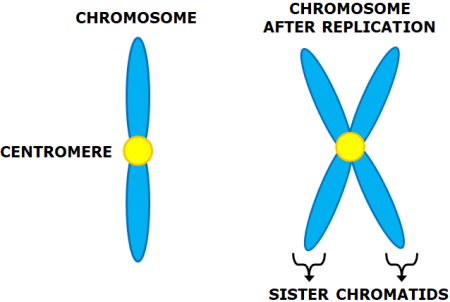
1/ When the CAS enzyme does a double stranded break (DSB), it can be repaired by 2 different pathways. The first is the Homology Directed Repair (HDR) and the second is Non Homologous End Joining (NHEJ). 

2/ What influences how the repair is made? This come from a few factors. The first is that NHEJ is the most dominant of the 2 repair pathways. Homology Directed Repair (HDR) is only used when a sister chromatid is available. 

3/ That means HDR repair is only preferred during S and G2 phase of the cell cycle after the DNA has been copied. It requires that sister chromatid as a template. Most cells don't undergo the cell cycle frequently.
4/ Most of the time the cell is in G0 phase of the cell cycle. That means its not undergoing mitosis. It is a mature cell that is going about its daily business. The rate at which cells turn over is different for each tissue. 

5/ That means most of the time cells will use Non Homologous End Joining (NHEJ). This actually falls into 2 different repair methods. 

6/ The first method of NHEJ is bunt end joining. This just basically takes the two ends and ligates them back together again. This is can be inaccurate and lead to insertions or deletions (Indels) of bases that can change the entire gene.
7/ The other method of NHEJ is called micro homology or the alt-NHEJ pathway. This will use those staggered breaks to match up small sequences of homology with the 2 strands before it ligates them back together.
8/ This a also more preferred during the S and G2 phase of the cell cycle. Since some of the cells will always be going through the cell cycle, you will often see the percentage of NHEJ vs HDR different based on that tissue.
9/ One tissue might not have any cells or only a small percentage of cells turning over at any time. You would see a percentage like 10% HDR and 90% NHEJ for that tissue.
10/ Another tissue might have rapid turnover so a higher level of HDR could be used. You might end up with 48% of the cells using HDR and only 52% using NHEJ. The default method will be to use NHEJ.
11/ When doing a CRISPR insertion, they can alter the rate at which HDR gets used by providing a template strand of DNA for insertion. This must be done using homology arms. 

12/ This template strand will contain the gene to insert along with about 40 bases on each end that are homologous for the DNA on either side of that gene.
13/ This template strand will work to drive the HDR repair. It requires the homology domains to ensure the gene gets inserted at the right location and in the right alignment. That prevents an inversion of the DNA being inserted.
14/ In CRISPR therapies, this would require one vector to carry the CAS enzyme to do the double stranded break. Another vector (usually AAV) will deliver the template into the cell. This often requires high doses of the template strand.
• • •
Missing some Tweet in this thread? You can try to
force a refresh





